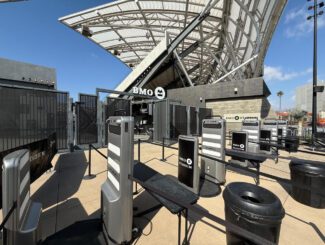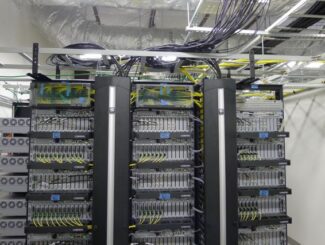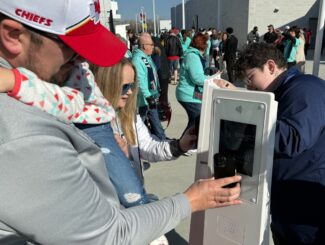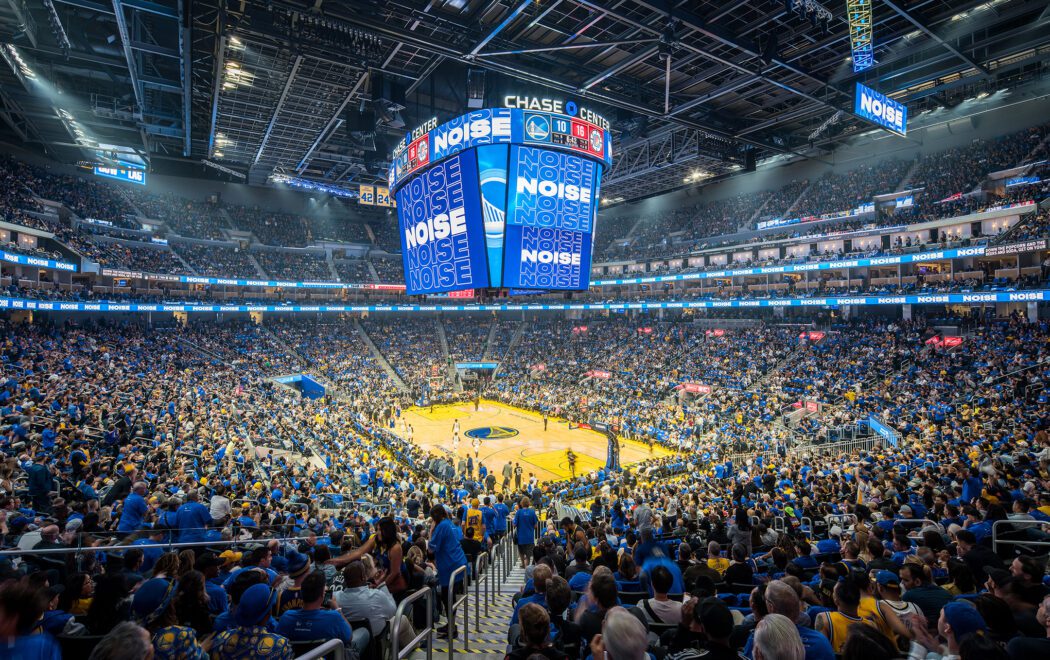
The Golden State Warriors announced the deployment of a Wi-Fi 6E network at Chase Center in San Francisco, believed to be the first arena or stadium network able to take advantage of the huge new spectrum swath at 6 GHz.
Using gear from Aruba, a Hewlett Packard Enterprise company, the network covers the seating bowl at Chase Center (which seats more than 18,000 for basketball games) with 250 Wi-Fi 6E APs. According to the Warriors, the 6E network has been live since early September and is already generating some 6E-specific traffic, even though the number of commercially available phone handsets that support 6E is small.
Wi-Fi 6E is the extension of the Wi-Fi 6 protocol (also known as 802.11ax) that supports the new spectrum bands in the 6 GHz range that the FCC approved for unlicensed use in 2020, a move that withstood a court challenge from cellular carriers. What makes the spectrum especially appealing for stadium use is its wide amount of spectrum space, 1200 MHz in all, which will allow for significantly wider channels and theoretically much better and faster Wi-Fi connections.
The only caveat right now is that the back-end gear like APs is out ahead of most mass-market phones; the new iPhone 14, for example, does not support the Wi-Fi 6E bands. While some newer phones do support the 6 GHz bands (like the Google Pixel 6 and some of the Samsung Galaxy phones), according to the Warriors this move is more of a future-proofing step than something that will translate to immediate improvements this season.
“We’re super excited for what this might support in the future,” said Daniel Brusilovsky, vice president of technology for the Golden State Warriors, in a phone interview, talking mainly about how the expected benefits of Wi-Fi 6E, including improved speeds, latency and capacity will improve the fan and back-of-house experience.
“If you think about the rise of [fans] streaming, the number of IoT devices in the venue, and applications like augmented and virtual reality, we’ve only just scratched the surface,” Brusilovsky said. “It’s fun just imagining all the crazy ideas our marketing and social media teams will be able to try out. There’s so many boxes that this [technology] checks.”
An easy upgrade
One of the more interesting things about the Warriors doing a Wi-Fi upgrade is that Chase Center was probably at the bottom of any list of venues in need of an upgrade. When the arena opened in 2019 (you can read our profile of that deployment here), it had one of the first full-stadium Wi-Fi 6 networks, and according to the Warriors and Brusilovsky, the stadium’s Wi-Fi has more than handled the needs of the biggest crowds.
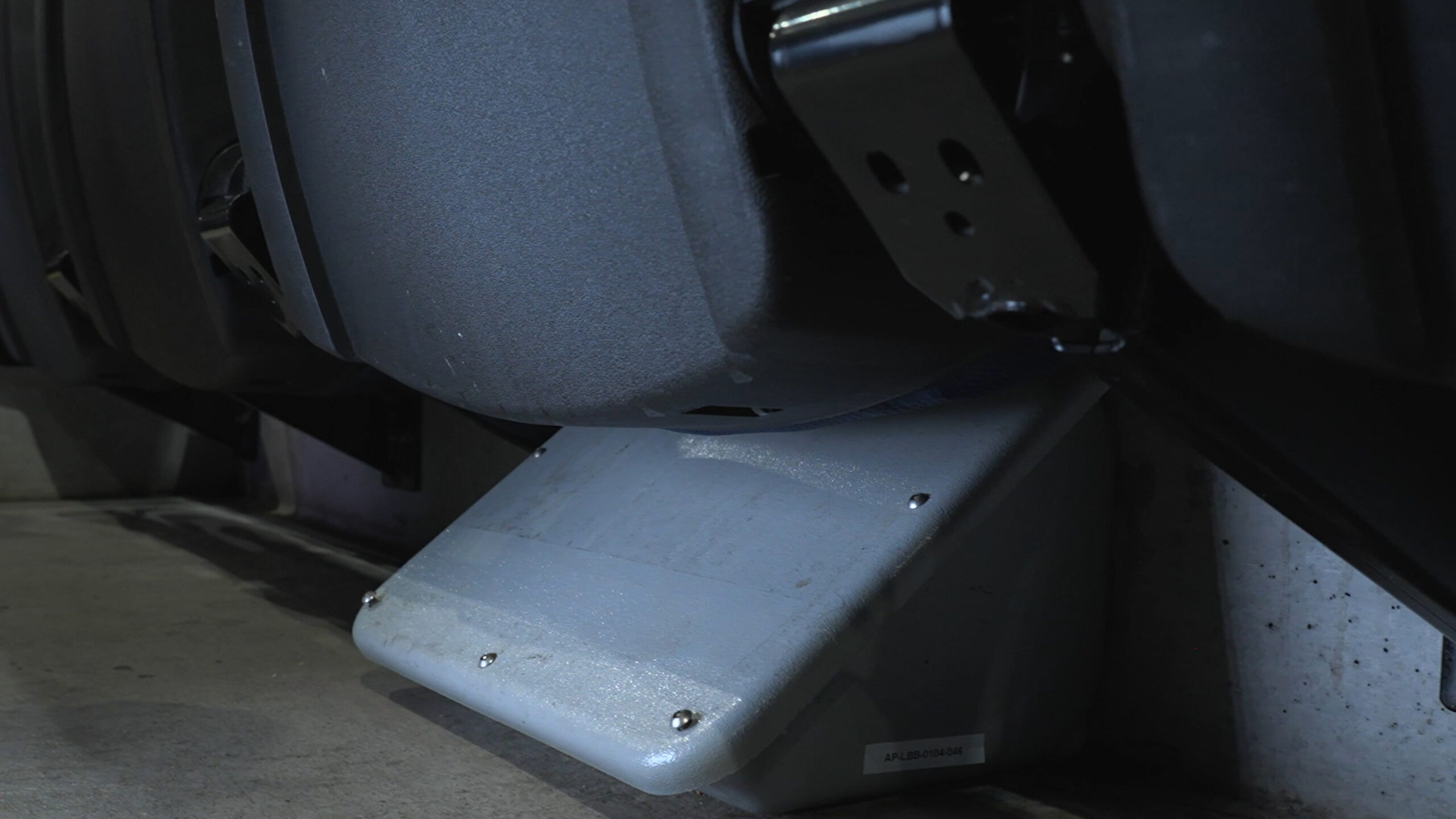
According to a press release about the new network, the Warriors said Chase Center saw peak Wi-Fi usage totals of about 3.8 terabytes for the NBA Finals games hosted in the building this year, as well as a peak above 4 TB for the arena’s hosting of NCAA men’s basketball tournament games.
“Those totals didn’t even scratch the surface of what the original network could handle,” said Brusilovsky. “We had games with 60 percent take rate [on the Wi-Fi network] with no problems at all.”
But if there is a venue that will see fans using the latest and greatest devices sooner than others, it’s probably Chase Center, where tech-savvy Silicon Valley types fill the seats. So this summer, with events inside the Chase Center at a slower pace, the team and Aruba took the time to upgrade to Wi-Fi 6E, a task made easier by the work done before the building opened. According to Brusilovsky, the under-seat deployment of APs in the seating bowl for the original network needed almost no reconfiguration — and most importantly, no new concrete core drilling — to handle the new Wi-Fi 6E APs.
“It was as simple as taking out the old APs and putting the new ones in the old enclosures, with a few inches to spare,” Brusilovsky said. Brusilovsky also said that the original switching infrastructure supported the new APs without any necessary additions.
Learning and tuning
While the venue is already seeing some Wi-Fi 6E traffic from what Brusilovsky called “a handful of devices,” he and the Warriors know that learning and tuning the new technology will be a process that takes time. The good news is, the Warriors are out in front of the Wi-Fi 6E adoption curve and should have time to tweak and evolve the network before Apple adds support for the 6E bands to its phones (which are still far and away the most-used brand of devices in stadiums, pretty much every time we check).
“By this time next summer we should know a lot more,” said Brusilovsky, who said the Warriors and Aruba will be able to learn not just from the Chase Center network but from other venues as they start deploying and using Wi-Fi 6E as well. “This is not a set it and forget it project,” he said.
More reading: Wi-Fi Scores 100X Data Increase at the Super Bowl over 10 Years for 20X Less Money than 5G




